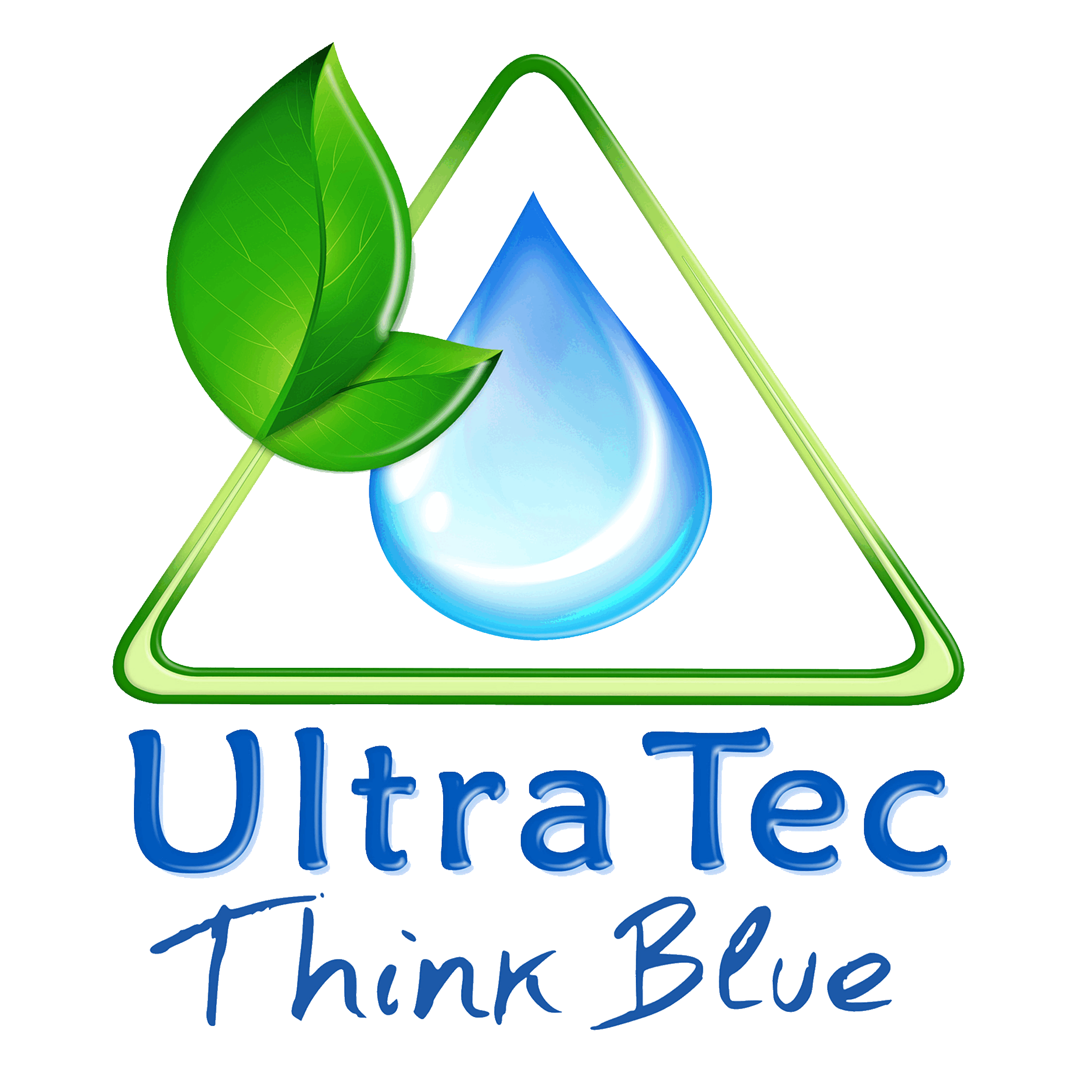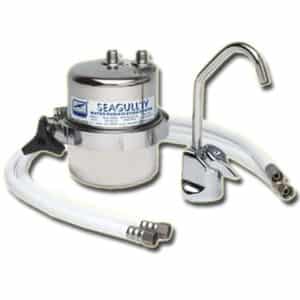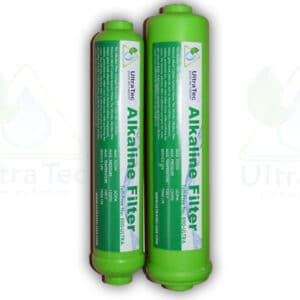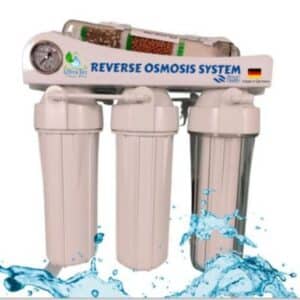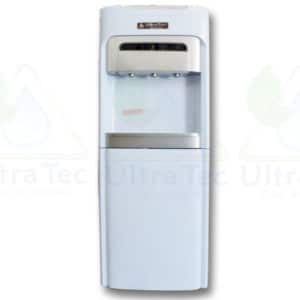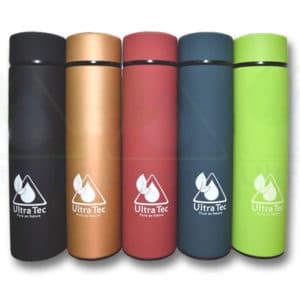Reverse Osmosis Water and pH
Reverse osmosis is an effective and efficient water purification technology that removes most contaminants and dissolved salts from water, making it clean and pure. It is a system to demineralize or deionize water with the help of a semi-permeable membrane. The process removes potentially harmful and toxic compounds from your drinking water and leaves the water practically distilled.
A semi-permeable membrane is a filter that allows certain particles to pass through while stopping others from doing so. Suppose you have one container with water containing high salt contents and another with low salt concentration, separated by a semi-permeable membrane. In that case, the water with a low salt concentration will move toward the container with a high salt concentration. They are the natural process of osmosis.
With reverse osmosis, we try to accomplish the opposite by applying pressure. The water is then pushed to the other side through the membrane. The impurities are left behind as a concentrate or reject stream, and clean and pure permeate water is obtained.
pH, simplified, is a measure of the activity of hydrogen ions (H+) present in water, with a minus sign.
Why is RO Water Acidic?
However, the pH of RO (Reverse Osmosis) water may cause concern. Water is supposed to have a pH value of 7, which is neutral. But why does RO water have a pH between 5 and 6? Is it not dangerous?
To answer these questions, let us understand what causes the pH of the water to change. It is important to remember that if a solution has more H+ ions, it is said to be acidic, and if it has more OH- ions, it is basic.
A water molecule (H2O), as you know, is composed of two parts Hydrogen and one part Oxygen. The self-ionization of water leads to the dissociation of a small percentage of water molecules into hydrogen ions (H+) and Hydroxide ions (OH-). When the water lacks impurities, the hydrogen and hydroxide ions cancel out each other’s influence, and the water remains neutral.
When water is passed through a semi-permeable membrane using pressure, many organic and inorganic compounds fail to pass through. However, gases like Carbon Dioxide make it to the other side. CO2 combines with water’s free OH- ions to form acidic HCO3. In contrast, the H+ ions fail to find any substance to interact with, as most impurities have been removed through the RO process.
CO2 + H2O <–> H+ + HCO3-
As a result, water has a positive ratio of H+ ions, reducing its pH and making it acidic. (Again, remember, pH is a measure of H+ with a minus. No more chemistry further, we promise!).
The greater the amount of CO2 in your water, the greater the pH level drop. However, there is no reason to be alarmed, as the acidity of RO water is weak. A couple of specks of baking soda are enough to neutralize a glassful of RO water.
Is Acidic Water Dangerous?
If the pH tests of your tap water show that your household is receiving acidic water, it can be dangerous. Acidic water is corrosive and can interact with lead, copper, zinc, and other metals in the plumbing and piping to increase the toxicity of your drinking water. These metals can be detrimental to the health and well-being of your family. However, drinking contaminants-free water with low pH levels or high acidity is perfectly safe.
Your body does a great job of always holding a near-neutral pH of 7.4. When you drink slightly acidic water, it loses its acidity when it comes in contact with saliva in your mouth and food in your stomach. Your stomach is a highly acidic place with a pH value of 2. Do not think slightly acidic water will change your stomach’s pH or negatively affect your short-term health. Granted, the US population consumes primarily acidic food and beverages, and the long-term effects of this can be detrimental.
Most fruit juices are acidic, and you know how some of them, with no added sugar, are great for your health. There are many other highly acidic beverages you use every day without giving it a second thought. Did you know that Soda or carbonated drinks have a pH value of around 2.5 and that the pH of Coffee is 4? Slightly acidic RO water pales in comparison to most drinks we consume. Average tap water in the United States also has pH levels of 6 to 8.5.
“If you have any health issues, or are trying to lose weight, you should stop consuming acidic and sugar-added drinks. It is best to balance acidity in your diet with a pH-neutral or even slightly alkaline purified water.”
If you have health issues or are trying to lose weight, stop consuming acidic and sugar-added drinks. It is best to balance acidity in your diet with pH-neutral or even slightly alkaline purified water. In this case, a water purifier with balanced pH is a must. Because of the long-term cumulative effect, we suggest using an alkaline re-mineralizer cartridge on the RO systems.
So why give extremely pure and clean RO water a go?
Alkaline Filter Cartridge PH 8.5 – 9.5
Alkaline Filter Cartridge PH 8.5 – 9.5good quality ph 8.5-9.5 alkaline filter cartridge/alkaline mineral water filter cartridge
Increase the pH of the filtered water typically to between 8.5 and 9.5. Changing the oxidation/ reduction potential of the water (ORP) to between -100mV and -250mV. There give the water antioxidant properties. The antioxidant effect is due to the release of molecular hydrogen, which research shows is very powerful. Decreasing the size of the clusters of water molecules so that the water is absorbed more in the body. Setting into the water beneficial alkaline minerals such as potassium, magnesium, and calcium.
Alkaline RO 6 Stages 75 GPD System
Alkaline RO 6 Stages 75 GPD SystemIntroducing our advanced Alkaline RO System with 6 Stages and a 75 GPD (Gallons Per Day) capacity, a powerhouse in water filtration. This state-of-the-art system combines multiple stages of filtration and alkalization to deliver you the purest, healthiest, and best-tasting water possible for your home or business.
Alkaline Water Filter Dispenser
Alkaline Water Filter DispenserSpecial design water purifier direct connection no need for dispenser tank. No waste Water, No Drain
Built-in storage with float control fully automatic synchronized with Water filtration unit.
This hot and cold water dispenser is a must for every home/office the high quality filtered –purified- alkaline water at the touch of a push button.
Healthy Alkaline Water Bottle 350 ML Dual Filter
Healthy Alkaline Water Bottle 350 ML Dual FilterHealthy Alkaline Water Bottle 350 ML Dual Filter 5 Colors Nano Bottle Energy Flask Stainless Steel
